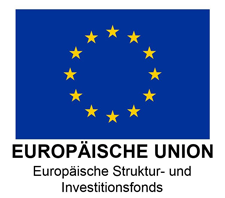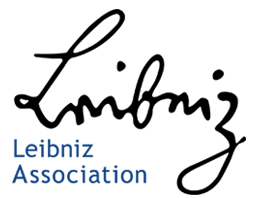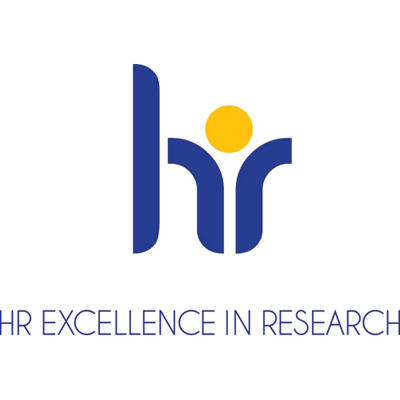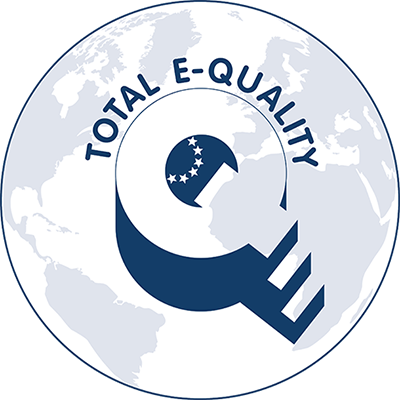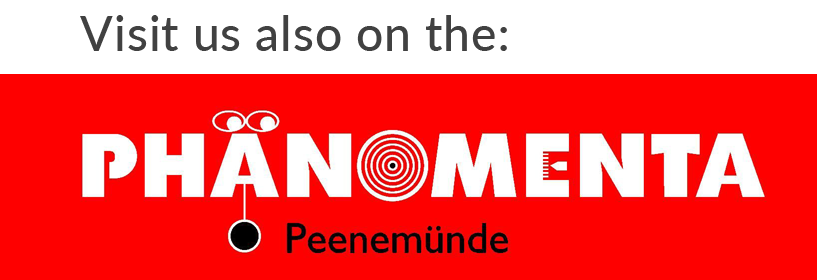Application Laboratories
INP is equipped with various diagnostics methods for the analysis of plasma processes and plasma sources, of plasma-treated surfaces and specific plasma applications such as biomedical applications and arc plasmas in switching devices, for cutting and welding.
The properties of materials and the interaction of materials with the environment are primarily determined by surface conditions. By using plasma technology it is possible to specifically modify almost any surface property and to generate new materials with special functions that way. The analysis of surfaces is one of the special fields of the INP. The existing spectrum of equipments, the knowledge for operation and the methods for analysing measurement data are continuously extended and improved. Thus, it has been possible for INP to produce highly precise results all the times and to position itself in the world-wide top-level research for years. The production of precise results and the positioning in the international top-level research are guiding principles of the institute.
Determination of the chemical composition and bindings in the surface
- High-resolution X-ray photoelectron spectroscopy (XPS)
- Lateral resolution >27 µm
- Energy resolution: 1 eV
- 2D imaging mode
- Ion source (argon or coronene C24H12) for the cleaning of the surface and production of depth profiles
- Energy dispersive X-ray spectroscopy (EDX)
- Fast quantitative element analysis for elements starting at atomic number 5 (boron)
- Qualitative mapping and LineScan analysis
- Complex analysis in combination with electron microscopy
- FT infrared spectroscopy
- Qualitative chemical analysis of functional groups in MIR spectral range
- Sample specific configurations: ATR, IRRAS, transmission
- FTIR mapping of planar samples (ATR microscopy)
- Complex analysis in combination with EDX spectroscopy
Determination of the morphology of the surface
- Atomic force microscopy (AFM)
- Scan range:
- max. 100 µm x 100 µm for overview images
- ≤ 10 µm x 10 µm for detailed images
- ≤ 1 µm x 1 µm for high-resolution images
- Different measurement modes:
- C-AFM static scanning in the contact mode
- NC-AFM oscillating scanning in non-contact mode
- IC-AFM oscillating scanning in approximated mode
- LFM scanning considering lateral forces (friction measurement)
- Maximum measurable heigth difference: 6 µm
- Scanning electron microscope (SEM)
- Lateral resolution: 1.0 nm
- Effective magnification: 200000 fold
- Microscopy without artefacts using gentle-beam mode (acceleration voltage from 100 V, metallization of the sample not necessary)
- Quantitative 3D image of the sample surface
- Selective detection of secondary and back-scattered electrons
- Sample preparation by cross section ion polishing
- Profilometry
- Height resolution: 6.5 µm, 65 µm, 131 µm, 2 mm
- Maximum sample size: 165 mm x 165 mm x 45 mm
Maximum lateral resolution: 4 nm - Optical microscope with 3D function
- Reflected light and transmitted light microscopy
- Resolutions: 25x, 50x, 200x, 500x
- Stereoscopic images (3D)
Including digital image recording, video recording
Determination of the transmission/reflection of the surface
- UV-Vis spectral photometry
- Wavelength range: 200 nm to 100 nm
- Optical constants (refraction index, extinction coefficient) and geometric layer thickness of single layers
- Estimation of the band gap of semiconducting materials
Determination of the adhesive strength of the coating
- Taber test
- Characterization of the scratch and abrasion resistance of planar samples
- Calotest (calotte grinding)
- Layer thickness measurement from 200 nm
- Diagnostics of multilayer structures
- Characterization of the abrasion parameters of the coatings
- Ultrasonic bath
- Frequency: 35 kHz
- Power: 2 x 35 W
- Different test liquids
Determination of the contact angle/surface energy
- Contact angle measuring instruments
- Minimum drop volume: 0.5 µl
- Testing with up to 4 liquids
- Water
- Ethylene glycol
- Diiodomethane
- Optional 4th liquid
- Including video function



Contact
Dr. Antje Quade
Manager Surface Diagnostics
Project leader
Phone: +49 3834 - 554 3877
quadeinp-greifswaldde
Dr. Jan Schäfer
Manager Surface Diagnostics
Project leader
Phone: +49 3834 - 554 3838
jschaeferinp-greifswaldde
The arc research laboratory serves primarily for application-driven research for the increase of reliability and lifetime of switching devices. Therefore, experiments on vacuum arcs and wall-stabilized arcs are utilized to study the arc behaviour and the electrode load in low, medium and high voltage switchgears at different current pulse shapes. Specific electrode arrangements including ablation nozzles can be used to simulate conditions in real switching devices or to study the interaction of the electric arc with electrodes, walls as well as with magnetic fields. The coupling between different optical diagnostics for the physical analysis of the arc is a unique feature of the laboratory. For instance, optical emission spectroscopy allows for the measurement of temperatures and species densities in the electric arc. High-speed imaging techniques is used to study of the dynamics and structure of the arc starting from the arc ignition process. In addition, surface temperatures of the electrodes can be analysed using combined diagnostic methods.
The laboratory equipment includes in particular:
- Setup for the operation of high-current arcs by means of pulsed current generators with the parameters (peak values): sinusoidal current pulses (DAC) up to 80 kA/ 5 ms, 40 kA/ 10 ms, or 25 kA/20 ms, square wave pulses up to 10 kA/ 2 ms or 2kA/10ms, flexible electrode arrangement including actuators for electrode movement
- Vacuum chamber including mounting support for electrodes, pneumatic actuator and access for optical diagnostics and probe measurements
- Electrical and optical sensors (photodiodes) for recording of temporal evolutions of current, voltage and emission signals in specific spectral ranges as well as corresponding methods for their analysis
- 0.5 and 0.75 m spectrographs with intensified CCD cameras (single images with exposure times from few ns to ms) for optical emission spectroscopy, in particular for measurements with high spatial and spectral resolution in the in spectral range from 300 nm to 900 nm with resolution of up to 0.05 nm
- High speed imaging cameras for up to 70000 frames/s for the study of the arc dynamics including spectral selective filters (narrow band MIF, edge filters, polarizer filters), double frame optics for simultaneous recording with two different filters and one camera
- Framing camera (4 independent images within e.g. 5 ns with exposure time of 3 ns) and Streak camera (temporal resolution <1 ns, 1 spatial dimension) for the observation of arc ignition processes in the ns-range
- Thermography / pyrometry for contactless measurement of surface temperatures of e.g. electrodes
Most of the measurement equipment (spectroscopy, high-speed imaging, thermography) are mobile and can be used for external measurement campaigns.
Contact
Dr. Sergey Gortschakow
Management Plasma Radiation Techniques
Phone: +49(0) 3834 554 3820
sergey.gortschakowinp-greifswaldde
Main topics of the application-driven research in the laboratory concern process safety, stability and efficiency of arc welding technology. The focus is put on the temporally and spatially resolved analysis of the welding arcs, the arc attachment at the electrodes, the material transfer and the weld pool properties. The plasma diagnostics allows for the measurements of temperature and species densities as well as, finally, the determination of the plasma properties of the welding arc. High-speed imaging techniques is used to study the arc structure, its dynamics and the material transfer. In addition, surface temperatures of the weld pool and of the metal droplets can be analysed.
The laboratory allows for the study of welding arc processes under realistic conditions in practical applications and is equipped with modern measuring techniques, in particular
- Setups with fixed mounting of the welding and flexible movement of test substrates under the burner for the optical study of the process from different sights of view, e.g. from top, parallel or perpendicular to the substrate surface including gas feed, exhaust unit and radiation protection
- Current sources of different manufacturers (e.g. Fronius CMT advanced 4000R, EWM Phoenix 521 progress pulse coldarc) as well as a freely programmable source (TopCon Quadro)
- Electrical and optical sensors (photodiodes) for recording of time sequences of current, voltage and emission signals in specific spectral ranges as well as corresponding methods for their analysis
- 0.5 and 0.75 m spectrographs with intensified CCD cameras (single images with exposure times from few ns to ms) for optical emission spectroscopy, in particular for measurements with high spatial and spectral resolution in the in spectral range from 300 nm to 900 nm with resolution of up to 0.05 nm
- High speed imaging cameras for up to 70000 frames/s for process control including spectral selective filters (narrow band MIF, edge filters, polarizer filters) with double frame optics for simultaneous recording with two different filters and one camera
- Framing camera (4 independent images within e.g. 5 ns with exposure time of 3 ns) and Streak camera (temporal resolution <1 ns, 1 spatial dimension) for the observation of arc ignition processes in the ns-range
- Thermography / pyrometry for contactless measurement of surface temperatures of e.g. electrodes
- X-ray computer tomography for non-destructive diagnostics of electrodes and material probes
Most of the measurement setups (spectroscopy, high speed imaging, thermography) are mobile and can be used for external measurement campaigns.
Contact
Dr. Sergey Gortschakow
Management Plasma Radiation Techniques
Phone: +49(0) 3834 554 3820
sergey.gortschakowinp-greifswaldde
The focus of the application-driven research in the laboratory is put on the increase of reliability and lifetime of electrical components taking in particular into account the aspects of environmental protection and energy efficiency. The following topics are currently under investigation on in the laboratories for high current and high voltage engineering (at the joint professorship at the University of Rostock):
- electric contacts and conjunctions (long-term stability, aging, thermal dimensioning, design)
- partial discharge diagnostics and analysis of electrical components
- aging of isolation materials under extreme conditions
- electric arc plasmas: experiments, modelling and diagnostics of switching arcs (see also Arc Research Laboratory of INP)
Available equipment:
- High voltage laboratory with digital measuring system including partial discharge measurement (basic noise level <1 pC), for AC voltage up to 100 kV, DC voltage up to 130 kV, impulse voltage 135 kV
- Partial discharge diagnostics (IEC 60270, UHF), impedance measurement system (35 TΩ, probe voltage 10 kV), dielectric response analyzer (200V, 100 μHz ..5 kHz)
- Climate laboratory with climate chambers for cooling and warm up cycles (-70 - +180 °C), thermo-chambers (+250 °C)
- High current laboratory with continuous-current setups (max. 3000 A), temperature measurement with thermo-sensors as well as IR camera technology
Contact
Prof. Dr. Dirk Uhrlandt
Division Manager of Materials and Energy
Phone: +49 3834 - 554 461
uhrlandtinp-greifswaldde
The application-oriented research activities in the department of plasma diagnostics are centered on investigations for process monitoring and control, especially in molecular plasma processes. The focus is on the time and space-resolved qualitative and quantitative chemical analysis of molecular plasmas, both in the gas phase and on surfaces.
Plasma diagnostics enables the absolute measurement of energy and temperature distributions as well as densities of stable and transient species in the plasma by means of probe diagnostics, absorption spectroscopy, and optical emission spectroscopy allowing the determination of all relevant chemical processes.
For the investigations, specially equipped laboratories are available for diagnostics on chemical plasma processes simulated in a practical manner with state-of-the-art measuring equipment, in particular laser-based plasma diagnostics. Spectroscopic questions in the spectral range from ultraviolet to terahertz are addressed.
In 2019, the new application laboratory for plasma diagnostics with a focus on atmospheric pressure plasma sources was founded. In this laboratory, various diagnostics of the institute are concentrated in one place in order to provide a central contact point for the characterization of atmospheric pressure plasmas. In the future, important parameters such as electron density or atomic and molecular spezies densities will be quantified in different types of plasma sources.
The following methods are used in the laboratories of the department of plasma diagnostics for the quantitative determination of important parameters such as the species densities and their temperatures, the energy distribution of charged particles and for the characterization of all relevant chemical reaction paths:
- Absorption spectroscopy in the UV-Vis-Mid-IR-THz spectral range
- Cavity-enhanced spectroscopy
- Laser-induced fluorescence (UV-VIS)
- Optical emission spectroscopy (UV-VIS)
- Probe diagnostic
- Microwave interferometry 50 and 150 GHz
- Mass spectrometry
- Synchronised electrical and optical sub-ns diagnostics
The diagnostic methods are also suitable to be transported for external measurements.
Contact
Dr. Jean-Pierre van Helden
Programme Manager Plasma Diagnostics
Phone: +49 3834 554 3811
jean-pierre.vanheldeninp-greifswaldde
The INP has its own microbiological laboratory of the security level 2 according to § 44 IfSG (German Infectious Diseases Protection Act) allowing activities with pathogens in accordance with § 49 IfSG and § 13 BioStoffV (2000/54/EG and 2010/32/EU). Current research activities include phytopathogens and human pathogens of risk groups 1 and 2. The microorganisms used are:
- Bacillus atrophaeus endospores
- Candida albicans
- Enterococcus faecium
- Escherichia coli
- Geobacillus stearothermophilus endospores
- Listeria innocua
- Listeria monocytogenes
- Micrococcus luteus
- Pectobacterium carotovorum
- Pseudomonas fluorescens
- Pseudomonas marginalis
- Salmonella enteritidis
- Salmonella typhimurium
- Staphylococcus aureus
In addition, the institute has cooperations with accredited and certified testing laboratories in the field of hygiene and participates in interlaboratory tests within research projects.
Contact
Dr. Veronika Hahn
Phone: +49(0) 3834 554 3872
veronika.hahninp-greifswaldde
Development of plasma processes for disinfection and sterilization of medical products and hygienization of food products. The focus of the development is currently on the following systems:
- Gas plasma processes for the reprocessing of medical devices
- Gas plasma processes for the gentle preservation of food products
- Special plasma sources to be build into endoscopes for the support of the preparation and for therapeutic applications
- Plasma processes for the antimicrobial coating
In addition to different plasma diagnostics methods (OES, LIF, MW interferometry), in-house microbiological laboratories are available for the analysis and optimization of the systems and can be made available to external users.
Contact
Prof. Jürgen Kolb
Programme Manager Decontamination
Phone: +49 3834 - 554 3950
juergen.kolbinp-greifswaldde
Provision, optimization and development of methods and systems of high-frequency engineering. They are used from the small-signal range for diagnostic applications to the large-signal range for the operation of microwave plasma sources.
The focus is currently on the following systems:
- (frequency-resolved) microwave interferometry power controlled and in free radiating systems up to 150 GHz
- Electron density determination: 1012 – 1022 m-3,
∆t < 1 µs - Determination of permittivity und permeability
- Development and implementation of beam-shaping elements (mirrors and lenses) for the adjustment of Gaussian beam paths up to 150 GHz
- frequency-resolved reflectometry in power controlled and in free radiating systems up to 50 GHz
- Single-port interferometry for the electron density determination
- Adjustment and optimization of methods of the digital signal processing
- Development of microwave components for the manipulation of scattering parameters
- Phase shifter
- Matching networks
- Mode coupler
- Barrier-free reactor access ports
- Development of microwave plasma sources
- Mini-MIP (powers < 100 W)
- Plexc (powers < 1500 W)
The development activities in the listed fields of activity are supported by numerical tools such as Matlab©, Comsol Multiphysics© und CST Microwave Studio©. The results obtained with it can be validated by means of systems for network analysis with a measuring range up to 50 GHz.
Contact
Dr. Jörg Ehlbeck
Management Plasma Bioengineering
Phone: +49 3834 - 554 458
ehlbeckinp-greifswaldde
The “Materials Characterisation Lab” provides a large range of analytical facilities for investigation of crystallographic properties such as crystal phase identity, bond lengths and angles as well as site occupancies of lattice sites. Band structure, defect formation in grain and grain boundaries as well as associated transport properties are studied by a means of a portfolio of electrochemical ac and dc methods. A recent addition are experimental setups to determine gas permeation rates (hydrogen and oxygen) in materials.
Bruker D8 Advance x-ray diffractometer: Cu Kα X-ray source, X-ray patterns in Bragg-Brentano or grazing incidence for 2θ angles between 5° and 140° with a resolution of 0.02°can be obtained by means of a LYNXEYE point and linear detector. X-ray diffraction (XRD) on polycrystalline layers and powders for identification of crystal phases and crystal size determination. Analysis is performed by Diffrac Eva software and Rietveld refinement by TOPAS software using multiple licensed databases.
Malvern Instruments MasterSizer 2000: Determination of particle size distributions for powders ranging from 20 nm to 2 mm particle size. Additional options are calculation of the specific surface and averaged particle size. Particle size distribution can be displayed as a function of particle volume, surface area or statistic particle number. Powders can be dispersed either in dry or in wet environment.
Renishaw inVia Raman microscope: Raman spectroscopy by means of a RL532C100 Laser source (wavelength = 532 nm, Pmax>1W) for the characterization of materials using molecular vibrations or phonon vibrations in solids. Wavenumbers ranging from 100 cm-1 to 3600 cm-1 can be analyzed using the WiRE Windows-based Raman Environment) software.
Digital microscope Keyence: 2D and 3D photos of up to 1000x magnification
FTIR-Spectrometer: Bruker VERTEX 70v: digital FTIR vacuum spectrometer for measurements in the MIR range (8000 to 350 cm-1) and FIR range (600 to 50 cm-1) with grazing reflection unit, ATR unit for both spectral ranges, and variable reflection unit
Buehler cross-section preparation kits: Mechanical polishing device Buehler EcoMet250 und precision saw IsoMet 4000 are employed to realize cross-sections of to a 50nm finish.
Zahner TLS03 and Autolab PGSTAT 302N including impedance Jig For AC impedance spectroscopy for frequencies ranging from 0.1 Hz to 10 MHz with possible use of a DC bias for the separation of bulk and grain boundary conductivities in different atmospheres and temperature regimes. Moreover, cyclic voltammetry can be used to study materials in solution.
Hydrogen perimeability test jig: Measurements of the permeability of hydrogen in materials by means of mass spectroscopy.
Furthermore, A setup for ammonia synthesis by electrolysis and an oxygen permeability jig are under construction.
Contact
Dr. Marcel Wetegrove
Phone: +49(0) 3834 554 3944
marcel.wetegroveinp-greifswaldde
Jan Wallis
Phone: +49(0) 3834 554 3822
jan.wallisinp-greifswaldde
The “PiL Materials Lab” is a new application lab at the INP with a range of batch- and flow-through reactors as well as a portfolio of pulsed high voltage generators for rapid synthesis of nanoparticle suspensions from liquid or solid precursors at atmospheric pressure. A unique combination of expertises in chemistry, physics and engineering allows for precise tailoring of modular synthesis routes for hybrids and complex nanomaterials, such as electrode and membrane materials and catalysts.
Following plasma sources and reactors are available for nanoparticle synthesis:
Kurita pekuris (CAMI II):
- Model MPP-HV04
- Bipolar pulse modulator in the liquid using SiC power device
- Voltage < 10 kV
- Frequency 2 – 200 kHZ
- Pulse with 150 ns – 1.5 µs at 200 kHz
- Power 1.5 kVA
Kurita pekuris (CAMI III):
- Model MPP04-B4-300-D230
- Bipolar pulse modulator in the liquid using SiC power device
- Voltage < 10 kV
- Frequency 3 – 300 kHZ
- Pulse with 150 ns – 1.1 µs at 300 kHz
- Power 1.5 kVA
Plasma in Liquid Reactor 1 (PiL R1)
- Quartz reactor (total volume 20 ml)
- Rod-to-plate configuration (W electrode and Mo plate)
- Ar flow through the electrode holder
- Cooling plate system connected to a thermostatic bath
Plasma in Liquid Reactor 2 (PiL R2)
- Teflon reactor with inner quartz glass
- Total volume 150 ml
- Rod-to-rod configuration with Ar flow through the electrode holders
- Cooling plate system connected to a thermostatic bath
Plasma in Liquid Reactor 3 (PiL R3)
- Teflon reactor for vanadium synthesis
- Total volume 250 ml
- Rod-to-rod configuration with Ar flow through the electrode holders
- Inner electrode holder diameter 2 Ø
- Flow external cooling system connected to a thermostatic bath
Plasma in Liquid Reactor 4 (PiL R4)
- Teflon reactor for Graphene synthesis
- Total volume 250 ml
- Rod-to-rod configuration with Ar flow through the bottom
- Inner electrode holder diameter: sizes 2 and 4 Ø
- Flow external cooling system connected to a thermostatic bath
Contact
Camila Andrea Rojas Nunez
Phone: +49(0) 3834 554 3947
camila.rojas-nunezinp-greifswaldde
Tilo Schulz
Phone: +49(0) 3834 554 3963
tilo.schulzinp-greifswaldde
The application lab “Green Ammonia Materials Synthesis Lab” bundles the INP’s long term leading expertise in thin film and nanomaterials synthesis by vacuum-based plasma methods. Reactors are available for multi-target co-deposition and high power impulse magnetron sputtering as well as plasma ion-assisted electron beam evaporation, complemented by surface activation and chemical vapor deposition. In combination with in house engineering expertise, the lab provides new routes for materials design for energy applications, corrosions resistant coatings and barrier layers.
HEIDI: Reaktor for High Power Impulse Magnetron Sputtering Reactor (HiPIMS)
- High power pulse during on-time (e.g. P = 107 W/m2, 500 μs)
- Polarized sample holder (up to 30 kV) for coupling HiPIMS with Plasma-immersion ion implantion (PIII)
- Multitarget-MS processes for compositional mapping
M900P: Reactor for Plasma Ion Assisted Deposition (PIAD)
- Electron beam evaporation of up to two precursor sources
- Multi sample holder for up to 50 Si Wafers
- Homogenously directed plasma by ring shaped magnetic coils
STARON: Reactor for co-sputtering processes
- 2x RF and 2x DC plasma sources for multi target magnetron sputtering processes
- Closed Field Unbalanced Magnetron Sputtering (CFUBMS) configuration
- Tubular (15 cm x 1 cm) and planar substrates (10 x 10 cm2) sample geometry
Rotating drum reactor
- RF plasma source for PECVD of powder substrates
- Surface activation and functionalisation of powder substrates
L2H and Nikolas: PVD/CVD reactors
- Combined magnetron sputtering and PECVD reactor for deposition of powder substrates and immobilised substrates
- Rotating sample holder for up to 10 g of powdered samples
- Loading ports for air sensitive samples
Contact
Dr. Martin Rohloff
Phone: +49(0) 3834 554 3843
martin.rohloffinp-greifswaldde
Uwe Lindemann
Phone: +49(0) 3834 554 3892
uwe.lindemanninp-greifswaldde
The “Life Science Laboratory” emerged motivated by the development of the research field of plasma medicine. Its adequate instrumentation facilitated through the ZIK plasmatis flagship projects allows thorough penetration of research questions. INP comprises laboratories that provide comprehensive equipment for advanced analytical and molecular technologies necessary for complementary life science research, including areas under S2 safety regulations.
The impact of plasma on biological systems manifests on the levels of organisms, tissues (organs), cells, and subcellular molecules. Sample types for analyses include (but are not limited to):
- patient and proband derived tissue
- tissue from animal experiments
- HET-CAM and TUM-CAM models
- primary cells and cell lines
- 3D multicellular spheroids
- proteins, peptides, lipids
These sample entities reflecting a broad spectrum of analytical challenges that are adressed with the following devices:
in vivo imaging:
- IVIS S5 high-throughput in vivo bioluminescence and fluorescence imager (PerkinElmer)
- TIVITA wound medical hyperspectral imaging (DiaSpective Vision)
tissue preparation:
- Automated tissue processor for fixation and paraffin-embedding (LOGOS One, Milestone Medical)
- Microtome (Leica RM2235)
- Cryotome (Leica CM1950)
imaging:
- 8-LED climate-controlled confocal Operetta CLS high-content image analysis system (PerkinElmer)
- Observer Z.1 for fluorescence microscopy (Zeiss)
- TC5 Laser confocal microscope with climate chamber (Leica)
- Stereo-fluorescence-microscope (Leica)
cytometry:
- 7-Laser 32-parameter MoFlo-AstriosEQ 6-way cell sorter (Beckman-Coulter)
- 3-laser 6-parameter Amnis ImageStream Mark II with autosampler (Merck)
- 6-laser 21-parameter CytoFLEX LX analyser with autosampler (Beckman-Coulter)
- 4-laser 13-parameter CytoFLEX S analyser with autosampler (Beckman-Coulter)
- 1-laser 4-parameter attune NxT analyser (ThermoFisher)
RNA-analysis:
- transcriptomic microarray analysis platform workflow (Agilent)
- SPRINT multi-parallel RNA analyser (NanoString)
- QuantStudio 1 qPCR (ThermoFisher)
Proteomics / mass spectrometry:
- QExactive classic, QExactive Plus, Exploris achieve high or very high resolution (up to 480,000 resolving power)
- Two mass spectrometer with unit/high resolution for small molecule research
In combination with nanoflow and normal flow liquid chromatography, compound identification and quantitation with analytical precision
Contact
Dr. Sander Bekeschus
Tel.: +49 (0)3834 554 3948
sander.bekeschusinp-greifswaldde
Dr. Kristian Wende
Tel.: +49 (0)3834 554 3923
Kristian.wendeinp-greifswaldde
Dr. Sybille Hasse
Tel.: +49 (0)3834 554 3921
Sybille.hasseinp-greifswaldde























